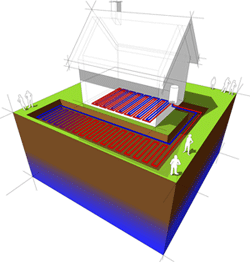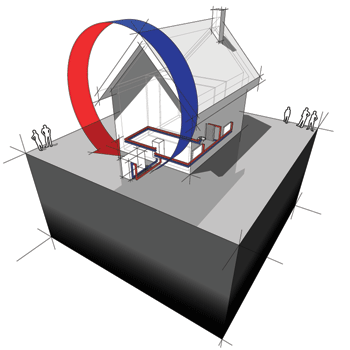If you're considering a serious investment in your home and its HVAC system, you may be wondering: How does geothermal heating work? Geothermal heat pumps (GHPs) are the most energy efficient and durable type of central home heating and cooling system available.
The answer to how does geothermal heating work lies in the ground —literally, as it uses the stored energy underground to act as a source for home heating. When combined with the heat-capturing technology of a heat pump, a GHP gives you dependable, energy-efficient and abundant heating regardless of the temperature outdoors.
How They Work
Most GHPs use an underground loop field that's filled with a heat-capturing liquid to either harvest heat in the winter or deposit it in the summer. Some GHPs use a nearby water source for this heat-exchange process.
The loop field for a ground-source heat pump lies underground and can be placed horizontally or vertically. A vertical placement is ideal for small yards.
Unlike a traditional heat pump or air conditioner, a GHP doesn't use an outdoor condenser since the GHP harvests the heat underground and not from the outside air. This is central to the question of how does geothermal heating work and why it's so desirable. The temperature changes very little deep underground where the loop field is, unlike the weather above the ground. A heat source is always consistent and ample.
Their Benefits
Geothermal heat pumps do not use fossil fuels, and as such, they operate more safely since there's no worry about carbon monoxide poisoning since there is no combustion process involved, which also lowers the risk of fire.
GHPs last longer than other kinds of HVAC systems. The outdoor loop field usually carries a warranty of 50 years and more, while the indoor components can last at least 25 years with routine maintenance.
Although they cost more to install, the federal government is offering a 26%tax credit for homeowners who install a GHP in their existing, primary homes. This credit is good through 2022 and covers the complete cost of the purchase and installation.
To learn more about the answer to the question of how does geothermal heating work, contact the pros at Air Assurance. We provide HVAC services for Broken Arrow homeowners.


















